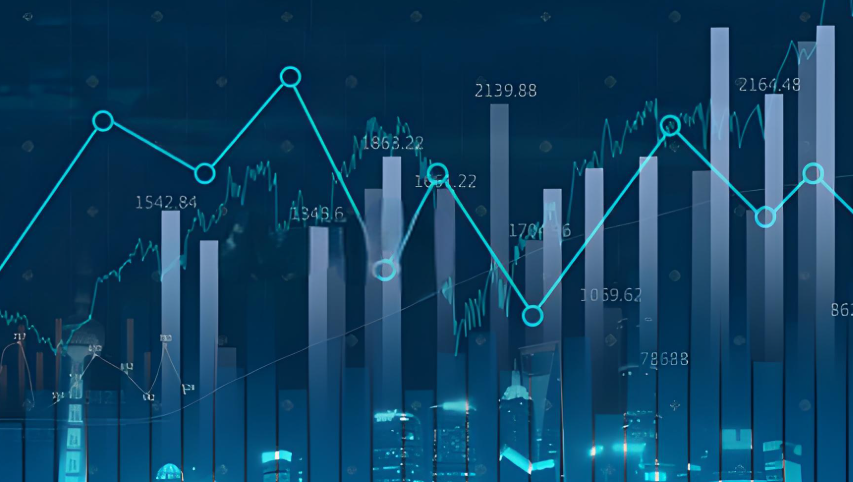In recent times, the stark divide in consumer behavior across social classes in the United States has come under scrutiny, highlighting a troubling cycle of wealth concentration and economic disparity. As the cost of living increases and inflation remains stubbornly high, many average American citizens find themselves scaling back their spending and making more calculated financial decisions. Meanwhile, a contrasting reality unfolds among the wealthy elite, who continue to spend lavishly on luxury goods and experiences without a second thought.
According to a recent analysis by Moody's Analytics, this growing wealth gap is underscored by the consumption patterns of the top 10% of earners—households making around $250,000 or more annually. This affluent segment has accounted for nearly half, specifically 49.7%, of all consumer spending in the U.S. as of present, marking an unprecedented statistic since data collection began in 1989. Back in the late 1980s, the same group represented only 36% of total spending. This dramatic increase indicates a more significant dependence of the economy on the affluent class and their spending power.
Mark Zandi, the Chief Economist at Moody's, notes that the spending of the wealthiest 10% is almost a third of the country’s Gross Domestic Product (GDP). This dependence on a small percentage of the population raises concerns about potential volatility in the economy. The recent report indicates that, between September 2023 and September 2024, spending by these high-income earners surged by 12%. In contrast, lower and middle-class families faced decreases in their expenditures during the same timeframe, reflecting the uneven distribution of economic fortitude.
Such trends suggest that the financial landscape for America’s wealthy inhabitants has never looked more favorable. They enjoy robust financial health—spending power soaring as inflation continues to eat away at the budgets of average families. The report underscores that while inflation has hovered over the economy, top earners’ spending growth eclipses the rate of inflation, further widening the gap between the wealthy and the rest.
For lower-income households, the picture is starkly different. The bottom 80% of earners have only seen a 25% increase in spending over the last four years, just barely keeping up with a 21% rise in prices in the same period. Conversely, the wealthiest 10% have witnessed their expenditures jump by an eye-popping 58%. This disparity raises pertinent questions about economic stability and equity.
It is crucial to dig into the factors contributing to this acceleration in wealth amongst the affluent. The housing market and stock prices surged during the pandemic, directly benefiting this wealth segment. As Zandi points out, these high earners often have higher levels of education and are typically older, solidifying their financial prowess via investments in real estate and equity markets, which have performed extraordinarily well in recent years. This rise in asset prices, while seemingly a sign of economic robustness, has further exacerbated the divide between those who possess these assets and those who do not.

The onset of the COVID-19 pandemic saw a unique furlough of spending across social classes, allowing American households to amass substantial savings. With millions confined to their homes, discretionary spending plummeted. Coupled with government stimulus measures, by early 2022, households held an additional $2.6 trillion in savings. Yet this scenario has shifted dramatically as inflation surged, forcing many Americans to tap into those savings to cover rising bills, while the wealthiest have largely retained their additional funds.
A significant factor in this ongoing stratification is the marked appreciation in stock and property values. Since the end of 2019, the net worth of the wealthiest 20% of Americans has escalated by over $35 trillion, with an overall gain of 45%. In comparison, the bottom 80% saw their net worth increase by a mere $14 trillion, highlighting stark disparities. Research by Bank of America has shown that spending by the wealthiest third of clients on credit and debit cards has escalated more rapidly than spending by the lowest income third, with high-end luxury purchases demonstrating particularly bullish growth—over 10% year-over-year among the top 5% of earners.
As noted by David Tinsley, a senior economist at Bank of America, affluent consumers are now flocking to global hotspots such as Paris, returning from their travels with luxurious goods. This relentless appetite for luxury is exemplified in various sectors, with Delta Airlines CEO Ed Bastian anticipating that strong demand for premium travel experiences will substantially boost profits this year. The airline projects an 8% increase in sales for business and first-class tickets, while economy class sales lag at a mere 2% increase.
Royal Caribbean has reported their best booking weeks in history, capitalizing on the high-end travel surge by rolling out new river cruising options appealing to affluent tourists. Observations from Morgan Stanley’s analysts articulate a growing chasm between businesses catering to the well-off and those that serve lower-income customers, as discounts retailers face struggles and closures, including recent bankruptcies for chains like Big Lots.
While the economic fortitude of the affluent seems strong at present, this reliance on high-income consumer spending poses significant risks. Should significant market fluctuations occur—be it stock market crashes or housing price declines—these wealthy consumers might reconsider their spending habits, sending ripples throughout the economy.
Indeed, recent consumer sentiment indexes indicate a downturn in confidence, affecting even the most affluent Americans, a sign that broader economic trepidation may be taking root, potentially undermining the very foundation of consumer-led growth that has come to characterize the current economic landscape.
 July 6, 2025
July 6, 2025